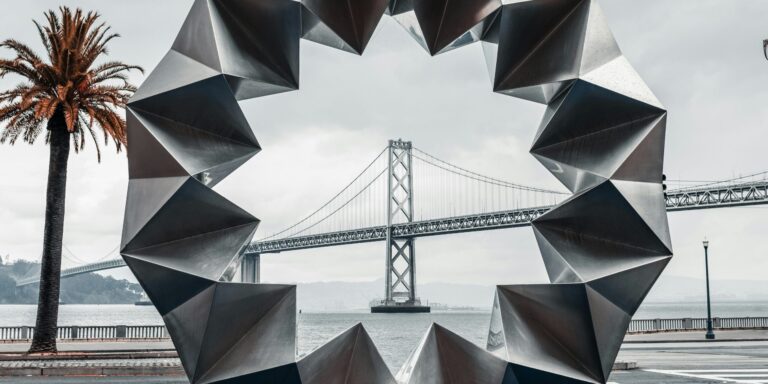On June 7, 2025, San Francisco’s bustling Market Street was transformed by the debut of Echoes of the Past, a stunning public art installation that blends the city’s rich history with contemporary artistic expression. This immersive installation, which runs through the summer, takes viewers on a journey through the Bay Area’s evolution, weaving together historical moments, iconic landmarks, and modern-day social movements.
The project was brought to life by the San Francisco Arts Commission in partnership with local visual artist Lena Tanaka, whose work often explores themes of memory, identity, and cultural preservation. Tanaka’s work has been a fixture in the Bay Area’s art scene for nearly two decades, and Echoes of the Past is her largest installation to date. The piece spans three city blocks and combines projected imagery, sculptures, and interactive digital elements to create a dynamic experience that allows passersby to engage with the city’s past in real-time.
In an opening speech, San Francisco Mayor London Breed praised the installation for its ability to bring together the city’s historical narratives with the energy of its future. “San Francisco is a city of constant change, but it’s crucial to remember where we’ve come from,” said Breed. “This project reminds us of the resilience, diversity, and innovation that has always defined this city. It’s a true reflection of who we are and where we’re going.”
The installation is divided into several thematic zones, each representing a different chapter in San Francisco’s history. One section features projections of the city’s iconic Victorian architecture, while another highlights the 1906 earthquake and the subsequent rebuilding of the city. A third zone celebrates the diversity of the Bay Area, featuring images of cultural celebrations, protests, and community-driven projects.
Key figures in the installation’s realization included Tanaka’s collaborative team of historians, digital artists, and local community organizers. The project was funded through a combination of city grants and private donations from local tech companies, whose involvement in the arts has been a growing trend in San Francisco.
Tanaka expressed her excitement about how the installation has encouraged visitors to reconsider how public art can engage with both history and contemporary life. “What I love about public art is how it’s constantly in motion,” she said. “People are moving through it, interacting with it, making it part of their daily experience. It’s an art that exists outside of galleries, outside of traditional spaces, and that’s what makes it exciting.”
While the installation has been widely celebrated for its innovative approach, some critics have questioned its accessibility, noting that the technology-driven nature of the installation may alienate visitors who are not familiar with digital art forms. However, Tanaka and her team have incorporated user-friendly features, such as an accompanying mobile app that offers additional context for each piece, making the experience more accessible to all.
As the Echoes of the Past installation continues to captivate audiences, it reinforces the Bay Area’s commitment to preserving its history while embracing the innovative spirit that defines its artistic community. The project is set to run through August 2025, with plans for additional installations in other parts of the city later this year.



